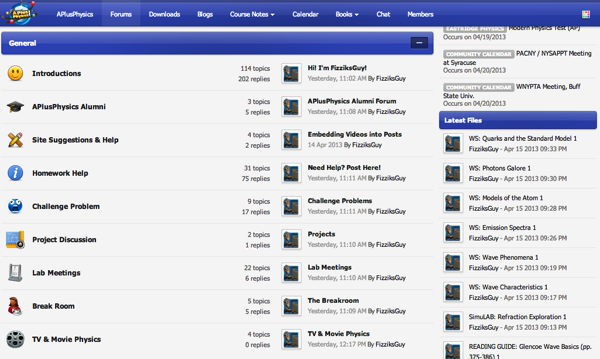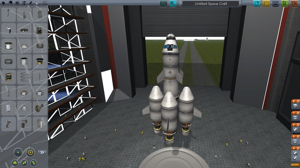Hi Everyone,
As you may have noticed, progress on the AP-1 / AP-2 videos has stalled over the past few weeks… let’s just sum it up by saying that if it could have gone wrong, it did. First we had a database “miscue” with our previous web server host, in which we lost the better part of 9 months of posts from this blog. grrrrr. Then a stomach bug went through our house. And as I had all sorts of time to grumble over the increasingly poor response times of our site and the loss of the data (despite regular backups), I finally made the decision to switch hosts and get us our own virtual private server.
What does all that mean, you may ask? First off, instead of sharing a bunch of computing resource power with hundreds of other websites, we’ve purchased a set amount of storage space, RAM, and CPU cores on a server that only services a couple web sites. Lots more resources devoted to our site means much more stable performance, and considerably improved loading speeds. It also adds a bit of complexity on my side, as well as a considerable increase in annual costs. I’m thinking about potential ways to offset that in the future, but in the meantime, I’m thrilled to have the site up and running the way it should be.
Along with the server upgrade, we had quite a bit of “migrating” of programs, settings, and data to do. MOST of it went smoothly. One program, however, did NOT like the change at all, our Forums/Blogs software. I was already somewhat frustrated with the support and performance of our old system, so after a few days of beating my head against the wall (and getting mighty fired up at the technical support line), I bit the bullet and upgraded our system to the “Cadillac” of forum and blogging software. This, also, took a bit of time to setup, and because we’d already invested so much in all the student posts and work, I was able to hire an expert to assist in migrating all the data we could (what hadn’t been nutzed up by the previous software) into the new system. And he was gracious enough to give us a great price with amazing service due to the nature of our site (Thank you so much!!!).
To help differentiate the old software from the new, and highlight some of the features of the new software, I’ve renamed the “Discussion” area on APlusPhysics “Community,” because really that’s what we’re trying to build. Not only do we now have forums (with some cool new features), and blogs (which even more cool new features), we also have a file repository where we can share electronic documents and programs with each other, we have an online chat system, we have tremendously improved calendars, the ability to better integrate “blocks” of content across the entire site, the ability to create custom pages (such as featured posts, highlighted material, etc. — I’ll turn this part on soon), the ability to incorporate e-books with direct downloads right from the site (instantaneous help!), even the ability to let members promote their good works to others across the entire site. Quite a few of these options I’ll be working on over the coming months, but as of today we have at least as much functionality as the old site, a much prettier graphic interface, and a fast, responsive, reliable site with a support team I have much more confidence in.
So what’s next? Well, my first priority is finishing the “skin” of the system. It’s almost there. By the way, did you know you can adjust the color scheme of the site? See that little rainbow grid in the upper right of the community? Click on it and choose your color — whatever mood you’re in, the system can handle!
Next, I have some behind-the-scenes work to do to tweak what shows up on the various pages… upcoming calendar events, latest files, users online, etc. They work currently, but I’d like to make their integration just a little more smooth. Nothing major, just have a bit of reading to do.
Third, I’ve had quite a few requests to take my Powerpoint slides from the video series and make them available for teachers to use. This may be a bit more involved, as there are some licensing restrictions I’m working with the appropriate parties on, but I’m hopeful we can get something worked out in the not-too-distant future.
Fourth, I’d like to get the featured content / topic pages built out. This will be an ongoing “as time allows” effort. This new system has tremendous potential to pull and organize information from a wide variety of sources, the question is “am I smart enough to make it work?” I’m hoping the answer is yes.
Fifth, I’d really like to work to promote the downloads section as an area where we as physics instructors can share the best of what we put together for our students. There are both public and educator-only folders, and I think this has tremendous potential to be a great resource for us all, but I’m betting there will be quite a bit of legwork to “sell” this concept to other physics teachers across the world, so that it becomes not just a place for folks to download my work, but a place where we can all collaborate and share with each other. In this, I definitely need your help. If you would, take a minute or two and find one original lesson, worksheet, lab, hands-on activity, whatever… upload it to the “Downloads” section and share it with the rest of us. Can you imagine what a wonderful resource we’d have if each physics teacher shared just one or two amazing activities? Imagine if we then started building off of those… then again and again… we’d have the greatest teaching resource of any discipline (and we’re already well on our way!)
Sixth, work hasn’t stopped on the physics videos. I have to admit I’m a touch burnt out after finish the AP Physics C series this year (both Mechanics and E&M), and completing an entire AP-1 / AP-2 sequence for Educator.com (which is currently branded as AP-B but was set up with the new courses in mind). I’m continuing to plug away on the optics section of AP-B, and have a few more pieces to fill in. Once I get through this week my hope is to complete at least one more video per week for the foreseeable future.
Last, but not least — I’ve spent the past year doing pre-work for an AP-1 / AP-2 guide book for students (in the vein of Honors Physics Essentials, but specifically directed toward AP-1 / AP-2). As we get to the end of the school year, I want to focus on the BIC (butt in chair) strategy to get a first draft underway. I have tons of notes, outlines, and materials, and from past experience once you get rolling it’s not so bad, but I need to take those first few steps. I just want to make sure I have all my other “gotta get done’s” out of the way before I dive headfirst into this one for the summer.
Thanks for all your support, and I look forward to seeing you on the new APlusPhysics Community (by the way, if you haven’t tried it out yet, we’d love to see you! Shoot me an e-mail if you’re a professional physics instructor and I’ll get your access upgraded so you can see into the “teacher-only” parts of the site as well)!





